Digitalisation of the economy is not a new trend and investments in digital and automation solutions have been active over the last five years. However, the Coronavirus (COVID-19) pandemic has accelerated this trend. Due to operating constraints and disrupted supply chains, companies have had to find new solutions and invest heavily in digital tools and automation solutions.
The growing number of internet users and changing consumer habits during the pandemic have also driven digitalisation efforts. Governments have invested in e-learning and smart city solutions, while changing consumer shopping habits have further accelerated e-commerce growth. These factors have all contributed to rapid digitalisation of the economy.
Factors Driving Digital Transformation of the Economy
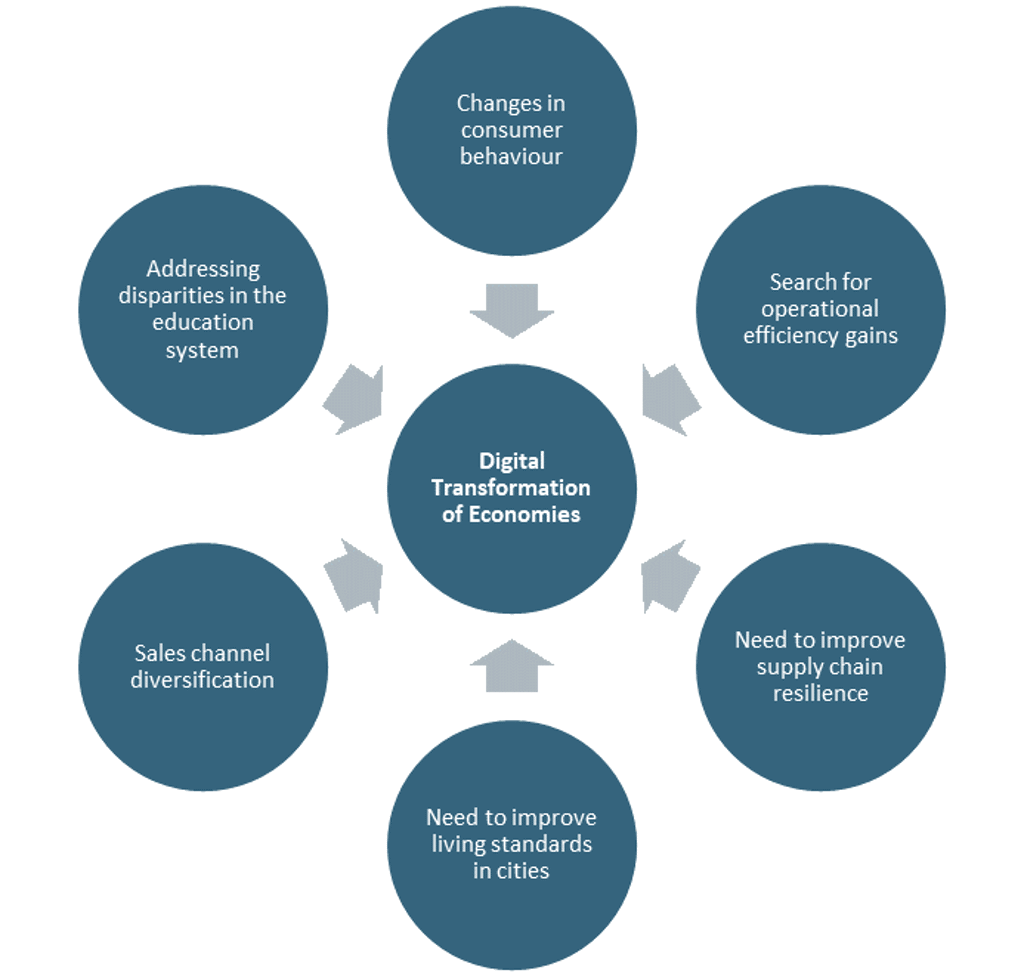
Source: Euromonitor International
Businesses plan to accelerate investment in automation and e-commerce tools
Production automation is one of the key trends driving investment into digital solutions for an increasing number of companies. . According to Euromonitor International’s Voice of the Industry: COVID-19 Survey fielded in April 2021 (VOI survey), 30% of companies globally plan to increase spending on automation tools in the upcoming five years, with this trend even more visible among manufacturers.
Manufacturers of electronic products are the most active, with almost 40% of companies planning to invest in automation tools. For example, in 2021 Bosch fully automated production of silicon wafers in its new semiconductor factory in Dresden.
Apparel, automotive and food processing industries are also expected to provide growth opportunities for automation equipment suppliers. The manufacturing automation industry is projected to recover from the downturn it experienced in 2020 and maintain steady growth, with production value forecast to reach USD160 billion in constant terms in 2025.
Share of Companies Planning Investments in Production Automation Tools by Industry, 2021
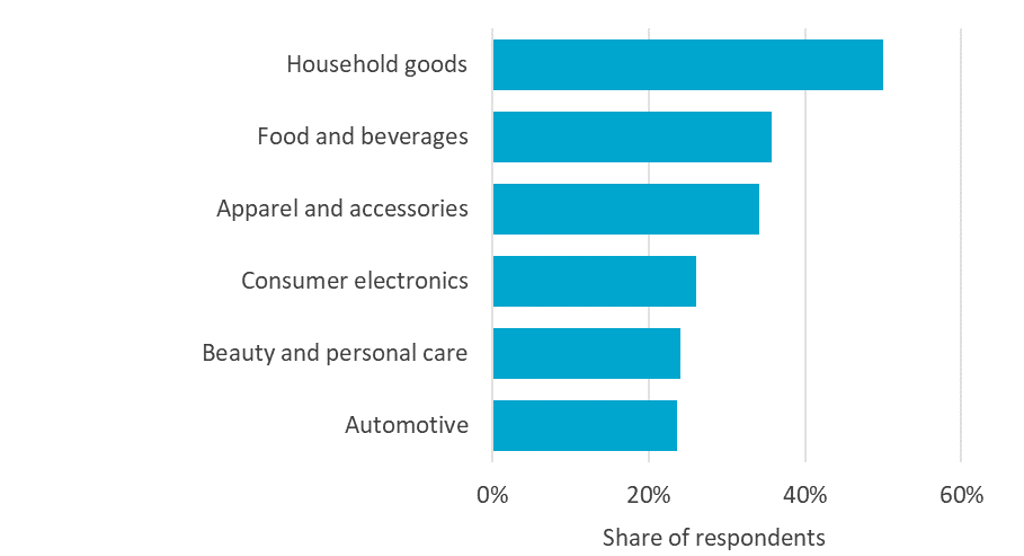
Source: Euromonitor International Voice of the Industry Survey: COVID-19 Survey, April 2021
B2B e-commerce is another trend driving investment in digital business tools. B2B e-commerce accelerated in growth during the pandemic and is forecast to sustain rapid growth in the coming decade.
Globally, 35% of companies plan to increase investment in e-commerce solutions according to the VOI survey and B2B e-commerce is projected to expand by 34% over 2020-2025 in constant terms to reach USD2.9 trillion. Investment in e-commerce is set to help companies to better adapt to changing consumer preferences, diversify sales channels and reach more consumers.
The expanding B2B e-commerce market is also expected to provide growth opportunities for technology companies offering, payment, order management solutions and online sales platforms.
B2B E-Commerce Sales in Selected Industries: 2020-2025
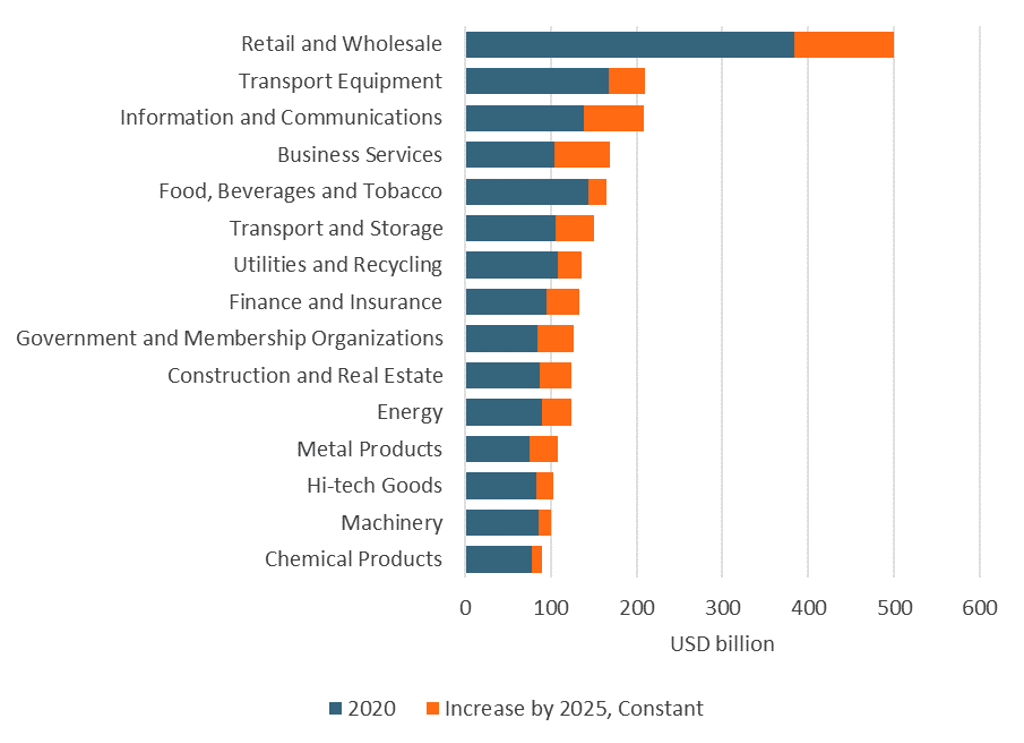
Source: Euromonitor International from national statistics, Eurostat, OECD
Consumer lifestyles changes to lift demand for digital learning and smart city solutions
The global pandemic has changed consumer lifestyles, including changes in education, driving the popularity of digital learning. According to Euromonitor International’s Voice of the Consumer: Lifestyles survey 2021, consumers plan to increase spending on digital learning solutions, with almost 40% of respondents in the 15-44 age group planning spending on digital learning and around 30% on learning technologies.
There is also a growing interest among respondents aged 60+, with around 15% planning to spend on digital learning. Overall, adult learning is forecast to be one of the most promising segments, with the adult education market in the 10 largest countries alone expected to grow to almost USD742 billion in constant terms in 2025.
Adult Learning Market Size in Top 10 Countries: 2025
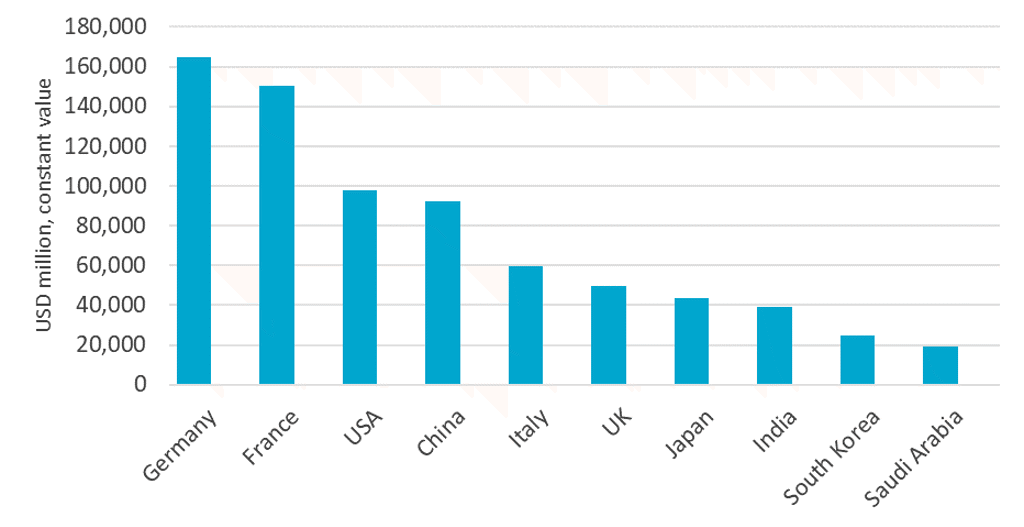
Source: Euromonitor International from national statistics
The global pandemic is also expected to influence how consumers live. Even though popularity of more densely populated megacities is forecast to decline, urbanisation is expected to further accelerate, with more than 5 billion people forecast to live in urban areas by 2030.
Africa, Asia Pacific and Australasia are expected to drive this growth, in large part thanks to the expansion of smaller cities. Expanding urbanisation is set to drive investment in smart city technologies, as consumers increasingly require green and sustainable cities, while ongoing suburbanisation will require new solutions to tackle transportation problems.
Urban Population Growth by Region: 2020-2030
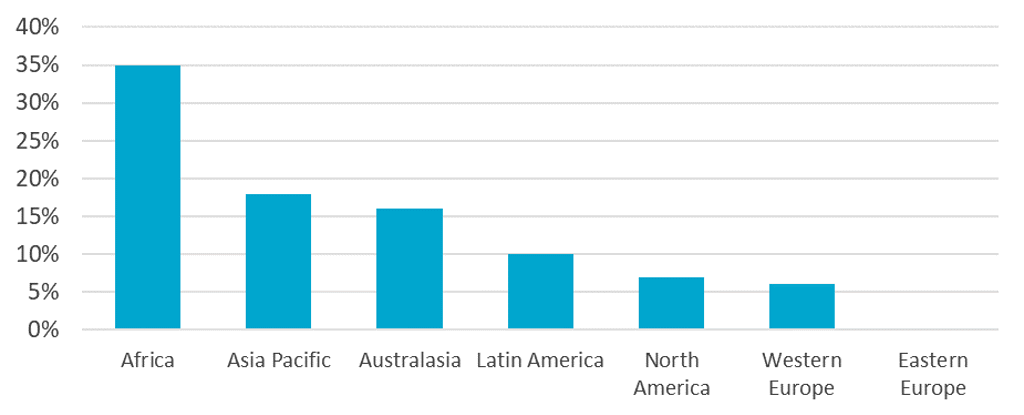
Source: Euromonitor International from national statistics, UN, World Bank
For more analysis please visit the Digital Transformation in Economies and Consumers strategy briefing.
